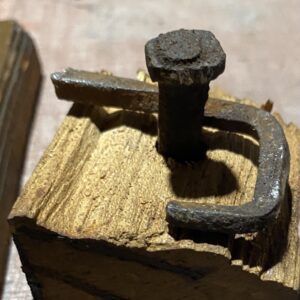I am restoring an old workbench and I found this nail in it. It’s the only metal in the bench, and it may postdate the bench, but the bench is certainly at least as old as this nail. Can anybody give me an approximate date for a nail like this? It’s the big one that I unfortunately had to cut in half. I’d estimate it’s 5 to 6 inches long
Discussion Forum
Get It All!
UNLIMITED Membership is like taking a master class in woodworking for less than $10 a month.
Start Your Free TrialDiscussion Forum
Digital Plans Library
Member exclusive! – Plans for everyone – from beginners to experts – right at your fingertips.
Highlights
-
Shape Your Skills
when you sign up for our emails
This site is protected by reCAPTCHA and the Google Privacy Policy and Terms of Service apply. -
 Shop Talk Live Podcast
Shop Talk Live Podcast -
 Our favorite articles and videos
Our favorite articles and videos -
E-Learning Courses from Fine Woodworking
-
-
 Fine Woodworking New England Event
Fine Woodworking New England Event













Replies
Sometimes you can conclude what it was used for based on context - that is where on the bench located, things around it, etc. Provide as much detail as you can and this might help some of the experts give an opinion.
Pic of the whole bench, please.
So it was clinched like that?
I will send a photo of the whole workbench soon. It is taken apart now, so I can work on it. It has a wooden vice with a wooden screw, square (hand-chiseled of course) dog holes in front, and a tool trough in back. The joinery is all wooden dowel pins, although there may have been some square nails used on the trough in back. I'm suspicious that the trough is not original, because one board looks milled, and because of the nails. All the other wood looks like it may have been hand-hewn. The entire top appears to be a single piece. I will take measurement, but it is at least two feet wide. I'm curious about a number of mostly vertical, but tilted, round gouges in the back of the tool trough getting deeper as they get to the top of the trough. There are many, and are clearly intentional. Does anyone know the purpose of those?
The "nail" was driven through the vice screw female, through the top of the bench, bent 90 degrees, bent again, and hammered into the top of the bench like a staple. That's why I think it may post-date the bench. Whoever made the bench seems like a real craftsman, and that seems like very much of a kluge, at least to me.
This forum post is now archived. Commenting has been disabled